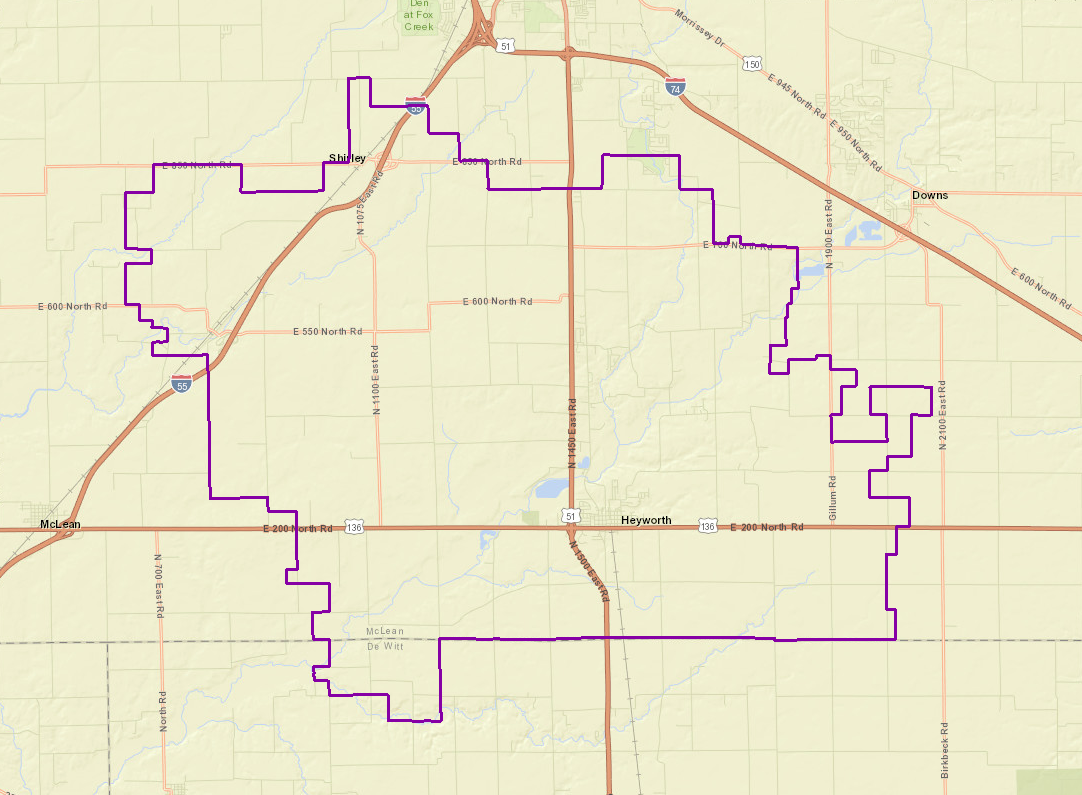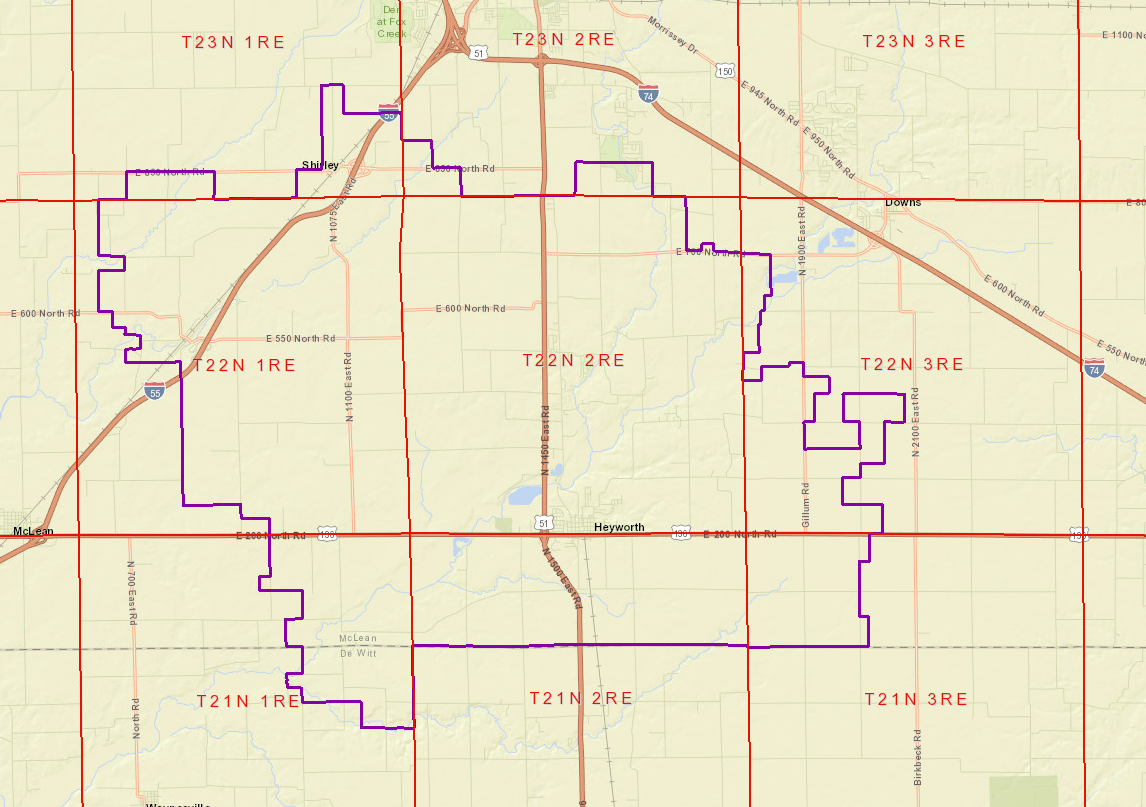Why is voting for Heyworth School Board Members so complicated?
During a discussion of the recent election for school board, frustration was expressed that voting for school board members was complicated. I’d like to see if I can help clarify how it works, what options we have and changes we could make as a community.
Let’s start with a map showing the area Heyworth School District covers, the purple lines show the edges of the district. The district covers a little less than 100 Square Miles.

What is a Township and Range? It’s a unit of measurement in the Public Land Survey System (PLSS) that’s approximately a 6-mile square section of land. For more details on it’s history and use, visit the USGS
Township and Range may be the borders of a township government, like Dale, or Bloomington. In cases like Randolph, Funks Grove and Downs townships, they are larger townships and are in two Township and Ranges. A Township and Range has a name that describes it’s relationship to the PLSS lines, not a person of historical significance. Below are the 8 Township and Ranges lines laid over our district with their names in the center.

Illinois School Code allows for several methods of conducting elections to help facilitate fairness in board representation. First election method is “At Large”. Candidates win by getting the most votes. Easy ballot to understand, easy math to see who won. Quite a few districts around us use this method. This can be seen as unfair, as the more populous area typically has more candidates and voters to maintain a majority on the board and may ignore the needs of outlying areas. On the other hand, this could be seen as more fair as each vote carries the same weight no matter where a candidate resides in the district.
Township and Range requires that candidates provide their primary residence when they submit their nomination papers. The candidates from each Township and Range get grouped together, and then all voters in the district get to vote on all candidates. Then who actually wins requires knowledge of who is already on the board, where do they live, math, logic and a wee bit of magic… yep, complicated.
“Township and Range” method has 3 different calculations. The first, and the one we use is no more than 3 members can be from a single Township and Range square. This can promote fairness because no single Township and Range can have a majority on the board. This could be seen as unfair in our district due to roughly 80% of the voters reside in T22N 2RE, but don’t have the ability to have a majority that proportionately represents that population.
The second calculation says if one Township and Range has between 75-90% of the population of the district, 4 members must be from that Township and Range, and the other 3 must be from any of the other Township and Ranges. This could be less fair to outlying areas who never have an opportunity to sway the board to a majority in their favor. This could be more fair to the most populous Township and Range as they are guaranteed a majority.
The third Township and Range calculation says that if over 90% of the population is in one Township and Range, then At Large method must be used.
There are two other election methods, “By District” and “incorporated and unincorporated”. Neither of these are appropriate or applicable to our district.
If an election results in a board vacancy due to Township and Range rules eliminating eligible candidates, the School Board must submit a resolution to the voters at the next general election to switch to At Large method. Voters can at any time, present a petition signed by 5% (that’s around 175 signatures for us) of the registered voters to the School Board secretary to submit the resolution to the next general election. The School Board can also vote at any time to submit the resolution to voters. To be approved, the resolution must pass with a super-majority of 2/3’s of the voters in favor.
When I was looking at running for board member last December, I discovered errors in one of the ranges assigned to our district. I’m sure the county election board would have found it on their own when the eligible voters jump from 67 to well over 10 thousand, but as you can see, Township and Range adds complexity to the voting process and the possibility for errors.
Would changing to At Large have different results in past elections? We will ignore for a second how voter behavior changes due to Township and Range. In the 2019 election, James Monteggia would have won instead of Justin Johnsen. In 2017, no change. In 2015, Phil Stielow would have won instead of Justin Johnsen. In 2013, no change as it was uncontested. 2011, likely no change. Before then, data is not available.
A change in the ballot format to At Large could have caused wildly different outcomes. More candidates may have run thinking they actually have a chance. Less candidates may have run thinking it’d be harder to win.
If we changed to At Large, we’d have a simpler ballot. But would we have more candidates? Would we have better candidates? Would our schools be better? Would our students be more successful? Would we have more voter participation? In looking back at past elections, there is a possibility it could reduce the level of board input from more rural areas in our district.
Disclaimer: Some details in the law I’ve glossed over in the interest of keeping this article short, relevant and to the point. If you want to review detail of the law that is relevant:
Illinois School Code 105 ILCS 5
105 ILCS 5 Article 9 – Elections
105 ILCS 5 Article 10 – School Boards
Maps where made using public data and the free ArcGIS platform: ArcGIS
Data from: National Center for Education Statistics, Illinois State Geological Survey, and McLean County GIS Consortium.
Election Result History from McLean County. 1 to 4 votes come from Dewitt county.